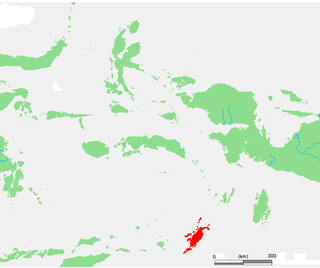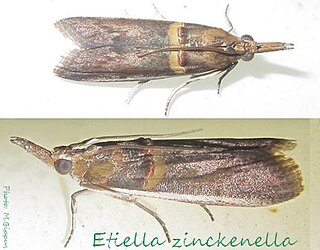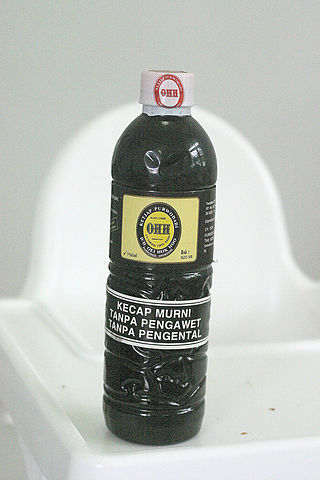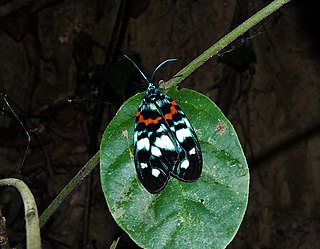
Soy sauce is a liquid condiment of Chinese origin, traditionally made from a fermented paste of soybeans, roasted grain, brine, and Aspergillus oryzae or Aspergillus sojae molds. It is considered to contain a strong umami taste.

The soybean, soy bean, or soya bean is a species of legume native to East Asia, widely grown for its edible bean, which has numerous uses.

Tempeh or tempe is a traditional Indonesian food made from fermented soybeans. It is made by a natural culturing and controlled fermentation process that binds soybeans into a cake form. A fungus, Rhizopus oligosporus or Rhizopus oryzae, is used in the fermentation process and is also known as tempeh starter.

Nattō, spelled as natto in standard English language use, is a traditional Japanese food made from whole soybeans that have been fermented with Bacillus subtilis var. natto. It is often served as a breakfast food with rice. It is served with karashi mustard, soy or tare sauce, and sometimes Japanese bunching onion. Within Japan, nattō is most popular in the eastern regions, including Kantō, Tōhoku, and Hokkaido.

The Tanimbar Islands, also called Timur Laut, are a group of about 65 islands in the Maluku province of Indonesia. The largest and most central of the islands is Yamdena; others include Selaru to the southwest of Yamdena, Larat and Fordata to the northeast, Maru and Molu to the north, and Seira, Wuliaru, Selu, Wotap and Makasar to the west. The Indonesian phrase timur laut means "east of the sea" or "northeast".

Douchi or tochi is a type of fermented and salted black soybean most popular in the cuisine of China, where they are most widely used for making black bean sauce dishes.

Euploea eunice, commonly called blue-banded king crow, is a butterfly found in the Indomalayan realm that belongs to the crows and tigers, that is, the Danaid group of the brush-footed butterflies family.

Ordgarius is a genus of orb-weaver spiders first described by Eugen von Keyserling in 1886. Adult females of the genus are bolas spiders, capturing their prey with one or more sticky drops at the end of a single line of silk rather than in a web. Males and juvenile females capture their prey directly with their legs.

Etiella zinckenella, the pulse pod borer moth, is a moth of the family Pyralidae. It is found in southern and eastern Europe and in the tropics and subtropics of Africa and Asia. They have also been introduced to North America and Australia. It is usually a minor pest for many legumes, but can be a serious pest.

Etiella behrii is a species of moth of the family Pyralidae. It is found in Hong Kong, Indonesia, Malaysia and most of Australia.

Tofu is a food prepared by coagulating soy milk and then pressing the resulting curds into solid white blocks of varying softness: silken, soft, firm, extra firm, or super firm. Tofu is also known as bean curd in English. Beyond these broad textural categories, there are many varieties of tofu. It has a subtle flavor, so it can be used in savory and sweet dishes. It is often seasoned or marinated to suit the dish and its flavors, and due to its spongy texture, it absorbs flavors well. It is a traditional component of East Asian and Southeast Asian cuisines, and has been consumed in China for over 2,000 years. In modern western cooking, it is most often treated as a meat substitute.

Tauco, Taucu, Taotjo or Tauchu is a paste made from preserved fermented yellow soybeans in Chinese Indonesian and Malaysian cuisines. Tauco is made by boiling yellow soybeans, grinding them, mixing them with flour and fermenting them in order to make a soy paste. The soy paste is soaked in salt water and sun-dried for several weeks, furthering the fermentation process, until the color of the paste has turned yellow-reddish. Good tauco has a distinct aroma. The sauce is also commonly used in other Indonesian cuisines traditions, such as Sundanese cuisine and Javanese cuisine. Taucu is generally used in cooking by Chinese Malaysian, Singaporean and Bruneian.

Etiella is a genus of snout moths. It was described by Philipp Christoph Zeller in 1839.

Stir-fried water spinach is a common Asian vegetable dish, known by various names in Asian languages. Water spinach is stir-fried with a variety of vegetables, spices, and sometimes meats. It is commonly found throughout East, South and Southeast Asia; from Sichuan and Cantonese cuisine in China, to Indonesian, Burmese, Cambodian, Filipino, Malaysian, Singaporean, and Vietnamese cuisine in Southeast Asia; to Sri Lankan cuisine and Bengali cuisine in South Asia.
Nasi gurih is an Indonesian steamed rice cooked in coconut milk and spices dish originally from Aceh, Indonesia.

Sweet soy sauce is a sweetened aromatic soy sauce, originating in Indonesia, which has a darker color, a viscous syrupy consistency and a molasses-like flavor due to the generous addition of palm sugar or jaggery. Kecap manis is widely used with satay. It is similar to, though finer in flavor than, Chinese Tianmian sauce (tianmianjiang). It is by far the most popular type of soy sauce employed in Indonesian cuisine, and accounts for an estimated 90 percent of the nation's total soy sauce production.

Erasmia pulchella is a species of moth in the burnet moth family Zygaenidae and in the subfamily Chalcosiinae. It was described by Frederick William Hope in 1840. It is found throughout Southeast Asia, with its range stretching from northern India, Myanmar, Laos, Thailand, Vietnam, China, Taiwan, and Japan. It is the type species of the genus Erasmia.
















